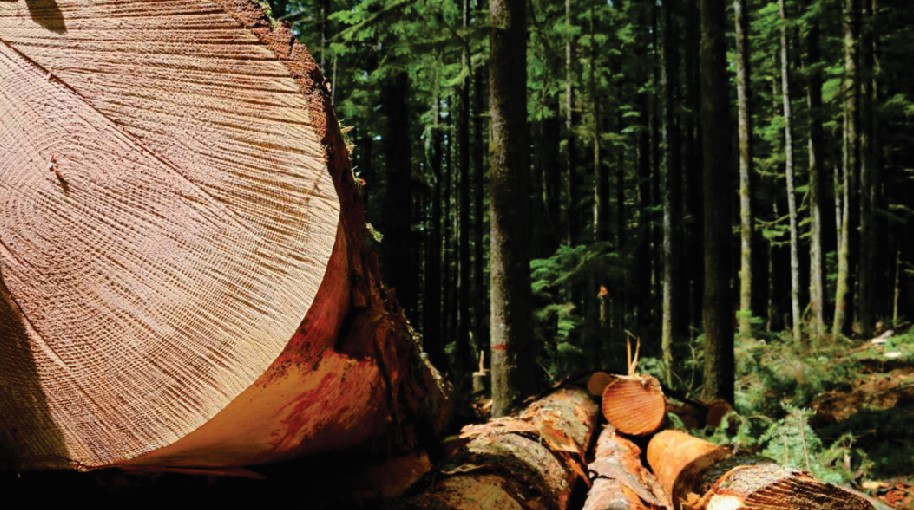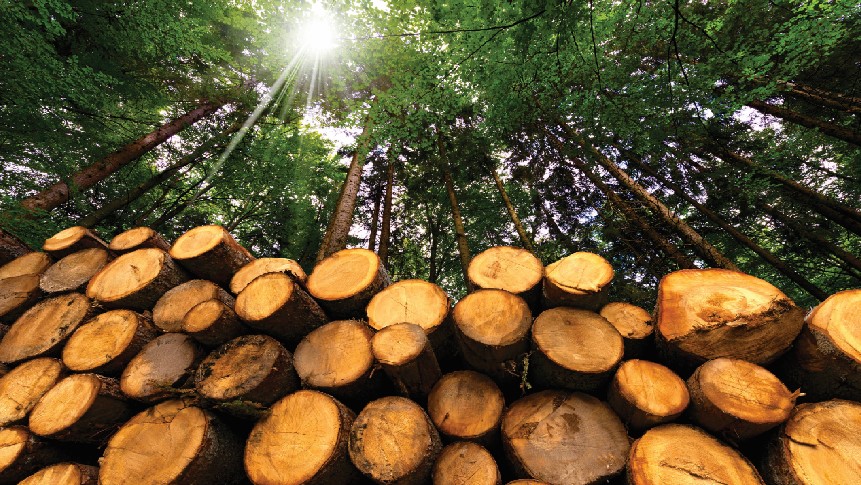
Urgent need for a Wood Development Board for Sustainable Timber Production and Rural Development
- May 10, 2025
- 0
The National Forest Policy (NFP), 1952 primarily focused on timber production to meet domes-tic and industrial needs. However, the NFP, 1988 shifted the emphasis towards forest conservation, participation of local people in forest management and encouraging wood-based industries to establish direct relationships with farmers to fulfill their raw material requirements. As a result, the wood is largely being produced by the private sector through farm/agro forestry. Agro forestry sector has been offering multiple benefits including meeting the increasing demands for timber, creating employment opportunities, particularly for school drop-out youth, and providing a shield for agricultural crops against climate-related challenges.
Currently, small timber is produced through short-rotation tree crops on farmlands, while the demand for large timber is mostly met through imports, with some supplies coming from forests. In 2023, India spent USD 2.7 billion on timber imports, underscoring the need to reduce this dependency (ITTO, 2023).
Recently, the Economic Advisory Council to the Prime Minister of India (EAC-PM) released a working paper on ‘Agro forestry’, recommending several bold policy changes (Sanyal et al., 2024). The paper proposes that states exempt high-value native timber species such as teak, garjan, and meranti from requiring felling and transit permits on the private lands. It also suggests expanding the National Transit Pass System (NTPS) to include issuance of felling permits, thus creating a single-window clearance system. Lastly, the paper recommends that all states and union territories adopt the NTPS portal, backed by farmer training and awareness programmes. However, certain constraints continue to hinder the growth of the agro forestry sector, which must be addressed to enhance its contribution.

Wood Development Boards
In the 2025-26 union budget, the Government of India announced the creation of a Makhana Board in Bihar to boost the production, processing, value addition, and marketing of makhanas. The Board will provide training and support to farmers, helping them benefit from government schemes aimed at increasing their income. Following a similar approach, the establishment of a Wood Develop-ment Board is essential to promote wood production on a large scale which will help in reducing the import of wood and wood products. This initiative will be according to the strategy suggested in the National Agro forestry Policy-2014. This initiative will also contribute to improving farmers’ incomes and creating employment opportunities, particularly in rural areas.
The State Forest Departments (SFDs), under the guidance of the Ministry of Environment, Forest and Climate Change (MOEFCC), implemented several externally aided social forestry projects during 1980s and 1990s, which primarily focused on agro forestry that increased wood production, enhanced farmers’ incomes, and expanded forest and tree cover. Given that agro forestry’s objectives align more closely with the mandate of the MOEFCC, transferring responsibility for agro-forestry to this ministry could lead to more focused and effective implementation. Secondly, Wood Development Board may be established under MOEFCC to promote wood production from farm-lands and reduce the import of wood and wood products.
Impetus on Research & Development
Despite its potential, the agro forestry sector has historically received insufficient investment in Re-search and Development (R&D). Big farmers aim to maximize profits from farming of tree crops, while small farmers seek additional income with minimal impact on their agricultural crops. Therefore, R&D in various aspects of agroforestry models should address the concerns of all stakeholders.
 The Forest Research Institute and other institutes under the Indian Council of Forestry Research and Education (ICFRE) have played a significant role in conducting fundamental research on commercial tree crops. Private companies have further advanced this research by developing high-yielding varieties and clones of commercial tree crops, thereby meeting the demand for quality planting material of the farmers. ITC Bhadrachalam Paper-boards Ltd., has successfully promoted the cultivation of eucalyptus, casuarina, and subabul nationwide, while WIMCO has been instrumental in popularizing poplar cultivation in North India. Tamil Nadu Agricultural University has played a key role in promoting the cultivation of Melia dubia in South India.
The Forest Research Institute and other institutes under the Indian Council of Forestry Research and Education (ICFRE) have played a significant role in conducting fundamental research on commercial tree crops. Private companies have further advanced this research by developing high-yielding varieties and clones of commercial tree crops, thereby meeting the demand for quality planting material of the farmers. ITC Bhadrachalam Paper-boards Ltd., has successfully promoted the cultivation of eucalyptus, casuarina, and subabul nationwide, while WIMCO has been instrumental in popularizing poplar cultivation in North India. Tamil Nadu Agricultural University has played a key role in promoting the cultivation of Melia dubia in South India.
Furthermore, tax incentives should be pro-vided to private companies for investments made in agroforestry R&D.
Strengthening Extension Infrastructure
It is crucial to strengthen extension facilities to effectively implement “Lab to Land” activities under agro forestry, ensuring that the benefits of R&D efforts reach the farmers. State agriculture departments, agricultur-al universities, and Krishi Vigyan Kendra (KVKs) under ICAR can play a pivotal role in disseminating technical knowledge about agroforestry to farmers. Additionally, filling the vacant positions of agro forestry specialists in KVKs needs to be prioritized.
Parity with Agricultural Crops
Currently, the incentives available to agricultural crops have not been extended to tree crops. While farmers cultivating agricultural crops can obtain loans at an interest rate of 4-5% through kisan credit cards, the farmers cultivating tree crops are required to take loans at much higher rates (14-15%), which is highly discriminatory. Additionally, insurance facilities, MSP/compensation under the Bhavantar Bhartiya Yojana, market establishment, and the e-NAM platform-available to agricultural crops-have not been extended to tree crops. As many states have declared farm wood as an agricultural produce, it is crucial that all the incentives provided to agricultural crops be extended to tree crops.

Way Forward
The recommendations in the EAC-PM’s working paper on ‘Agro forestry,’ could facilitate greater recognition of this sector in India’s economic development. These insights could play a pivotal role in shaping policy, particularly in clarifying the complementary roles of the Ministry of Environment, Forest and Climate Change (MOEFCC) and the Ministry of Agriculture and Farmers Welfare (MOAFW) in enhancing wood production from farmlands.
Furthermore, the EAC-PM may advocate for increased financial allocations for the proposed Wood Development Board, coupled with an expanded role for the corporate sector which has demonstrated strong performance in the past.
Strengthening the public-private partnership mod-el to attract greater investment will be essential. These policy advancements are expected to bolster the sector’s performance and significantly benefit rural areas which have been adversely impacted by reverse migration due to a limited employment opportunities in urban areas.

































































